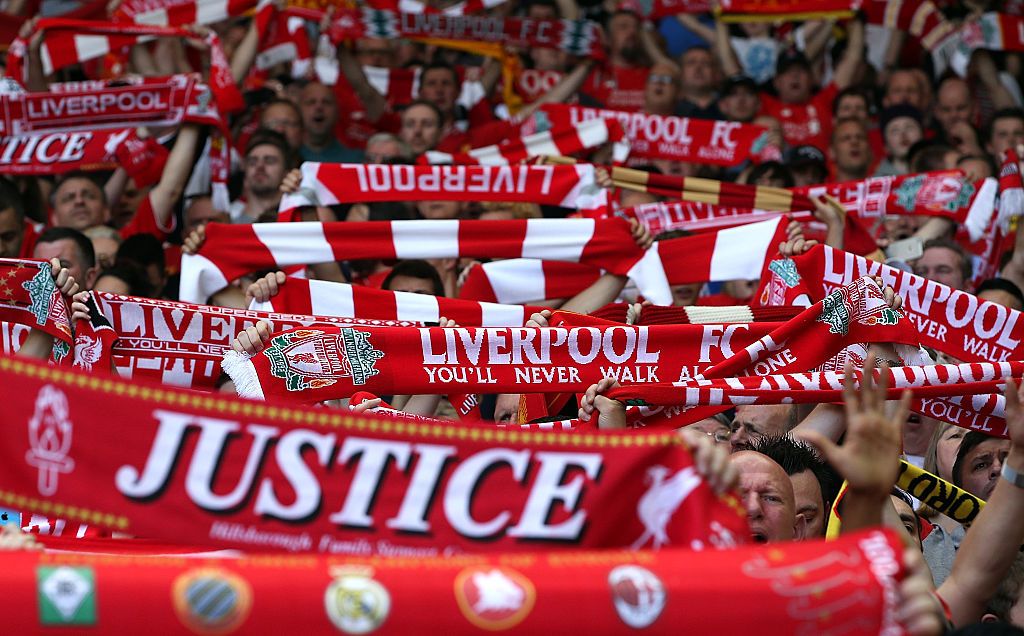One of the country’s leading campaigners for safe standing has claimed that rail seats would make attending football safer than all-seater stadia and insisted there is no logical reason to oppose their introduction at Premier League grounds.
Jon Darch, a Bristol City fan who operates the Safe Standing Roadshow in collaboration with the Football Supporters Federation (FSF), also dismissed claims from opponents that the introduction of safe standing could lead to a disaster similar to Hillsborough, maintaining that modern crowd management strategies have removed such a risk.
Speaking to JOE.co.uk as part of our day long debate on safe standing, Darch admitted that he understands opposition to safe standing from the Hillsborough Family Support Group (HFSG) “on a personal level” but insisted the evidence is now so overwhelming that rail seats could actually make attending football matches less hazardous that the government must take action.
“There is no good logical reason to be against enhancing spectator safety, which is precisely what the introduction of rail seating will do,” Darch said. “It will make the fans who currently stand in areas not designed for the purpose much safer.
“On an emotional level, however, I do understand that over the years of being denied justice, some of those most deeply and closely affected by Hillsborough came to see all-seater stadia as the only legacy of the 96 deaths. So, as a purely emotional reaction, yes, I can understand that.
“Now, however, justice is finally being delivered. The legacy is the unlawful killing verdicts. The legacy is the exoneration of the Liverpool fans. The legacy may yet by a Hillsborough Law and criminal convictions. Perhaps now it is therefore time to consider whether clinging on to the ban on standing – as the only legacy of Hillsborough – is still appropriate.”
 (Photo by Jan Kruger/Getty Images)
(Photo by Jan Kruger/Getty Images)
Referring to recent incidents in which fans have been injured in all seater stadiums during goal celebrations, Darch claimed such occurrences would not be possible if rail seats had been in place and believes evidence to that effect continues to be overlooked.
“A report was produced by WS Atkins for Trafford Borough Council some years ago and it concluded that passive, persistent standing behind normal seats was safer than jumping up from a seated position to celebrate a goal,” he said.
“It is nevertheless patently obvious that if you lose your balance while standing behind a conventional seat, or get an unexpected shove from behind (maybe caused by a fan in the row behind falling forward), you can easily topple over the seat’s low shin-high back. You have nothing to hold onto to arrest that forward movement.
“In extreme situations this can indeed lead to broken bones. Millions saw Marcus Rashford’s late winner for Manchester United at Hull City recently and the way that the United fans poured forward over the advertising board in celebration.
https://www.youtube.com/watch?v=i-j9dPHnLuQ
“An elderly female fan had to be helped back to her feet and at least one other fan broke his arm as a result of being pushed from behind and falling forward over the seats in front.
“Had that area been fitted with rail seats, fans couldn’t have surged forward over the seats, there would have been no collapse of the advertising hoarding, no lady knocked over and no broken bones.”
The debate over safe standing has intensified in recent days after the Liverpool supporters group Spirit Of Shankly (SOS) voted overwhelmingly in favour of consulting the Hillsborough families about the issue and Manchester United sent a delegation to Celtic Park to see how safe standing works in practice.
We need one of these safe standing sections yeno. Absolutely bouncing that Park Head #LFC #safestanding 👏🏼 pic.twitter.com/3pcNvgIg9d
— Phil Taberner (@philytabo) September 28, 2016
It remains a particularly thorny issue, though, and one which will continue to be informed by the events of April 15, 1989 when 96 Liverpool supporters lost their lives on the Leppings Lane terrace at Hillsborough.
The subsequent introduction of all-seater stadia was viewed as a crucial and necessary breakthrough in crowd safety but Darch believes it was founded upon a premise that does not tally with the tragic events of that day and one that no longer applies.
“The primary cause of Hillsborough was the abject failure of people charged with a duty of care towards spectators on the day to manage their admission to the ground safely,” he said. “The Taylor Report said so, the Hillsborough Independent Panel Report said so and now the inquests’ unlawful killing verdicts have underlined that once again. Failure to manage the crowd properly at the point of entry, not the nature of the spectator accommodation towards which the crowd was moving, was the primary cause.
“Modern crowd management methods, with barcoded tickets, hugely improved policing and stewarding procedures, strict control of capacities and high-resolution CCTV have led to sports stadia in the UK – those that are all-seater and the many that also provide standing accommodation – to be among the safest in the world.
“A straight swap of a small proportion of conventional seats in an all-seater stadium for the same number of rail seats is not going to change anything about the methods of crowd management employed at the point of entry.
“Once at their seats in the stadium, fans standing to watch the game in a rail seating section are going to be far better protected from stumbling or toppling forward than is the case in areas of all-seater grounds where fans stand today behind conventional low-backed seats.
“So far from leading to another Hillsborough, rail seating builds on the great strides that have been made in stadium safety over the last 25 years and makes our stadia even safer still.”













































